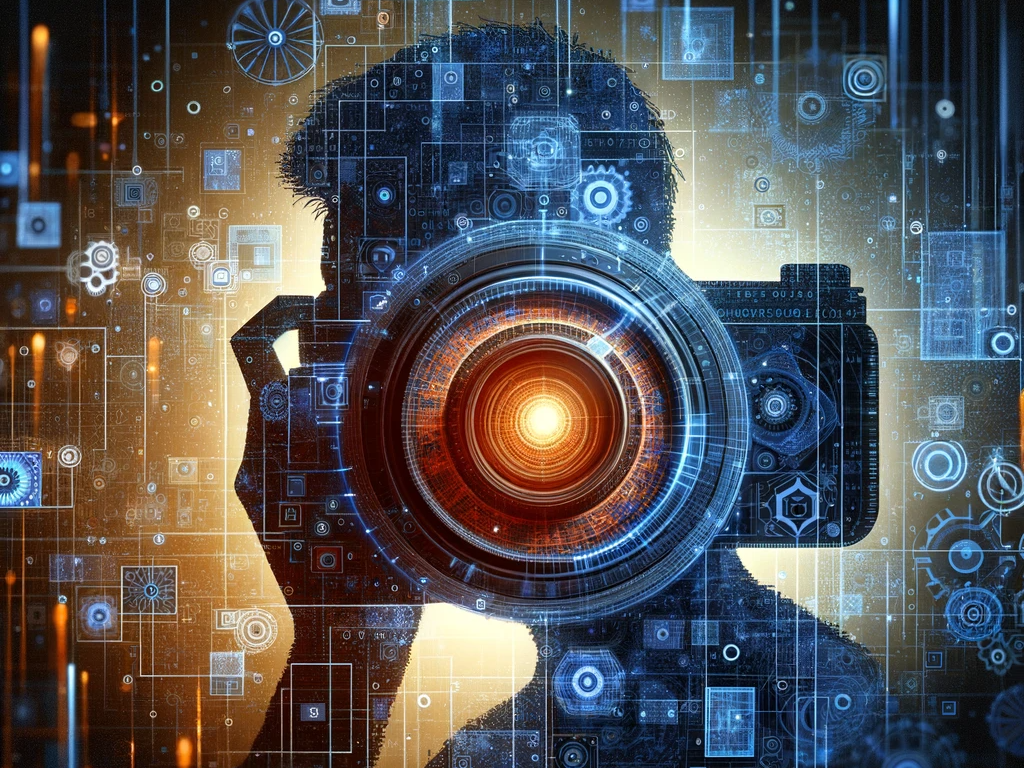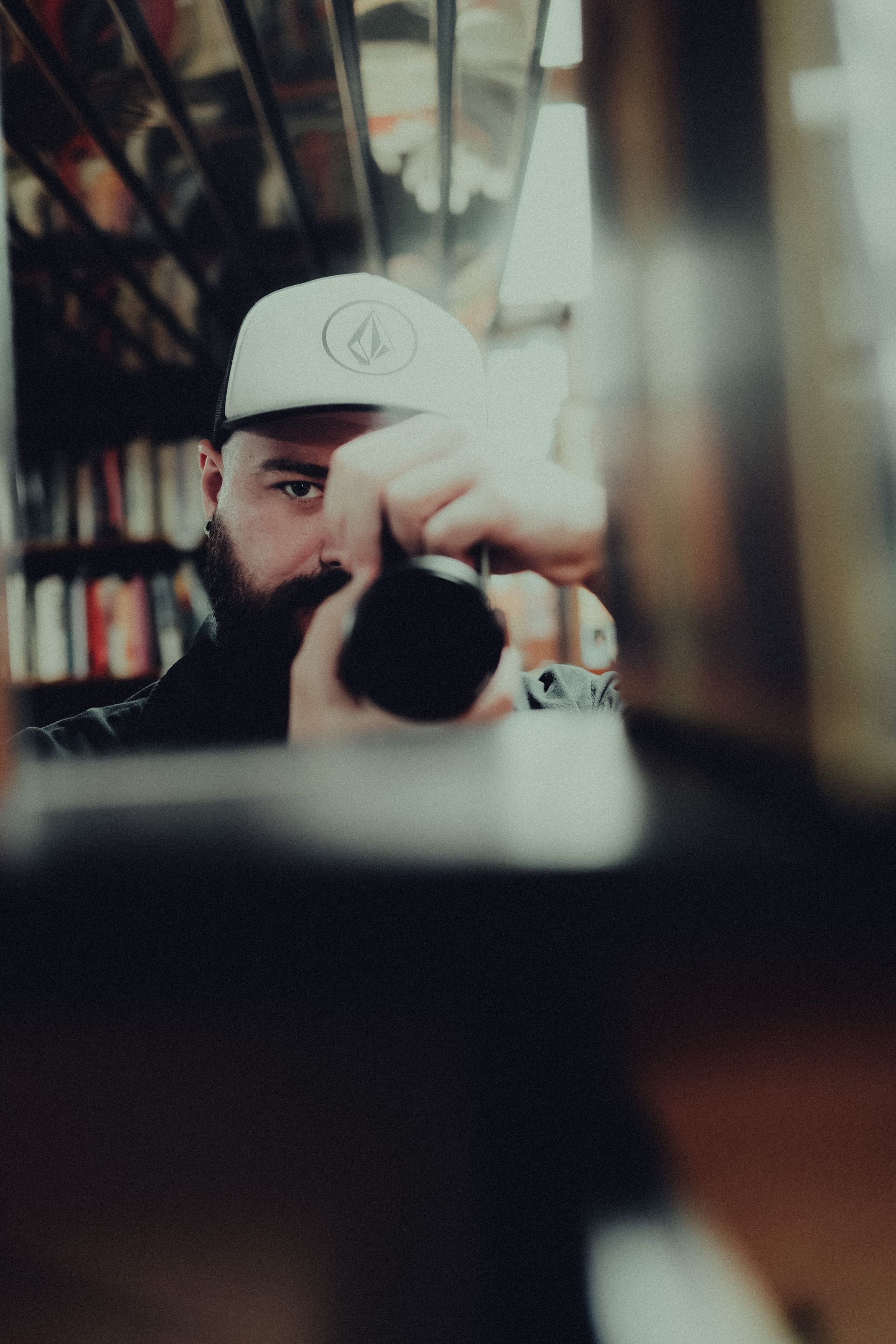- 222, Notre-Dame O., Vieux-Montréal (QC) H2Y 1T3
- Téléphone: 514.849.2291
- Sans-frais: 1.877.674.6868
- info@photoservice.ca
-
Lundi à Jeudi: 8h30 à 17h30
Vendredi: 8h30 à 18h00
Samedi: 9h30 à 16h30
Dimanche: Fermé
The advent of artificial intelligence (AI) in professional photography marks a significant period of transformation. As AI redefines the boundaries of image creation and analysis, it also raises crucial questions about authenticity, ethics, and the impact on the profession of photography.
Here are some of the many facets of this digital revolution and its implications for photography professionals.
Authenticity and Ethics: The Blurred Line
The integration of AI in professional photography questions the authenticity of images. This issue is critical in photojournalism where truth is essential. A notable example is the debate around the World Press Photo's decision to include AI, which was strongly criticized by over 100 photographers. This controversy highlights the importance of maintaining a clear distinction between AI creations and traditional photographic works to preserve the credibility and integrity of the field

Challenges and Professional Adaptations
The automation enabled by AI, especially in post-processing and image analysis and sorting, forces photographers to reinvent their skills. AI's ability to perform these tasks is changing the job market, pushing professionals to diversify. In the past, many have done so, for example by developing video skills. There were social media, and now, it's AI tools.
Creativity and Originality in the Digital Age
AI's ability to generate images challenges the creativity of photographers. They are challenged to maintain their artistic originality in a context where technology can produce visually similar works, thus questioning the place of human originality in photographic art.
Copyright: A Complex Legal Terrain
Copyright issues for images generated by AI pose new legal challenges. Defining intellectual property between the AI programmer and the user is a major issue for the industry. Manufacturers of cameras are now introducing integrated authenticity technology. This technology attaches a digital signature to photos at the time of capture to certify their legitimacy, thus creating a "birth certificate" for the images. This feature aims to protect the authenticity of professional content and help news agencies fight against falsified images.
Towards a New Era of Photography
To remain competitive and relevant, photographers need to focus on the unique aspects of their art that cannot be reproduced by AI, such as visual storytelling, artistic creation, and human relations, whether at the beginning of a project, during, or after distribution.
It will always be important to be passionate about one's subjects and to fully embrace one's creativity, whether by exploring AI or maintaining a traditional approach to photography. AI is more than just a tool; it will gradually become a full-fledged creative actor in the world of photography
To learn more about these topics, please consult the source article on Blind Magazine. →
Usefull Links:
Frequently Asked
Questions.
-
Q1: How can AI enhance photographers' creativity?
Artificial Intelligence opens new avenues for artistic innovation in photography by providing creators with innovative means to design works. Through AI's ability to generate visuals from a wide array of data, photographers have the opportunity to blend various methods, color palettes, and structures, which can inspire them to incorporate these new ideas into their projects.
This approach, supported by AI, encourages experimentation and the adoption of novel concepts, potentially enriching and diversifying their artistic expression.
Moreover, by analyzing vast sets of visual data, AI can uncover patterns and preferences, thus offering valuable insights into current trends and themes. These insights can guide photographers in selecting their future projects or adopting new techniques, in line with current market dynamics.
-
Q2: What role does AI play in improving image quality?
Artificial Intelligence plays a crucial role in enhancing image quality through sophisticated methods for increasing resolution, reducing noise, and adjusting lighting. It can transform photos taken under suboptimal conditions into works of exceptional quality by modifying exposure, enhancing details in poorly lit or overexposed areas, and refining sharpness, all without compromising the original quality.
These advancements allow photographers to produce striking images, even in challenging environments. Fields such as deep-sea underwater photography, the restoration of old photographs, and mobile photography applications greatly benefit from these technological advances.
-
Q3: How does AI assist in image rights management and fraud protection?
Artificial Intelligence significantly contributes to image rights management and fraud prevention through the development of advanced systems for image recognition and digital watermarking. These solutions enhance the identification and tracking of photographic works online, thereby facilitating copyright protection and combating unauthorized use.
AI also plays a key role in detecting image alterations, helping to preserve the integrity and authenticity of photographic creations in the digital space.
Des questions?
Nous aimerions avoir de vos nouvelles!
- 222, Notre-Dame O., Vieux-Montréal (QC) H2Y 1T3
- Téléphone: 514.849.2291
- Sans-frais: 1.877.674.6868
- info@photoservice.ca
-
Lundi à Vendredi : 8h30 à 17h30
Samedi: 9h00 à 13h00**
**ATTENTION NOUVEL HORAIRE
Dimanche: Fermé
Suivez-nous
Infolettre
Tout ce qu'il faut savoir sur le monde de la photo et des promotions spéciales.
Photo Service. Tous droits réservés.







